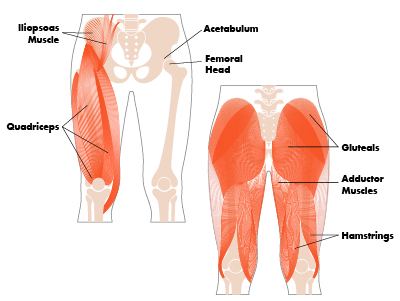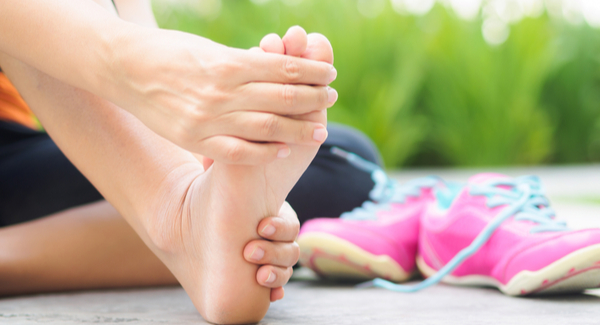Anatomy of the Hip
An inside look at the structure of the hip.
 One of the body's largest weight-bearing joints, the hip is where the thigh bone meets the pelvis to form a ball-and-socket joint. The hip joint consists of two main parts:
One of the body's largest weight-bearing joints, the hip is where the thigh bone meets the pelvis to form a ball-and-socket joint. The hip joint consists of two main parts:
- Femoral head – a ball-shaped piece of bone located at the top of your thigh bone, or femur
- Acetabulum – a socket in your pelvis into which the femoral head fits
Bands of tissue, called ligaments, connect the ball to the socket, stabilizing the hip and forming the joint capsule. The joint capsule is lined with a thin membrane called synovium, which produces a viscous fluid to lubricate the joint. Fluid-filled sacs called bursae provide cushioning where there is friction between muscle, tendons and bones.
The hip is surrounded by large muscles that support the joint and enable movement. They include:
- Gluteals – muscles of the buttocks, located on the back of the hip
- Adductor muscles – muscles of the inner thigh, which pull the leg inward toward the opposite leg
- Iliopsoas muscle – a muscle that begins in the lower back and connects to the upper femur
- Quadriceps – four muscles on the front of the thigh that run from the hip to the knee
- Hamstrings – muscles on the back of the thigh, which run from the hip to just below the knee
Major nerves and blood vessels also run through the hip. These include the sciatic nerve at the back of the hip and femoral nerve at the front of the hip, and the femoral artery, which begins in the pelvis and passes by the front of the hip and down the thigh.

Stay in the Know. Live in the Yes.
Get involved with the arthritis community. Tell us a little about yourself and, based on your interests, you’ll receive emails packed with the latest information and resources to live your best life and connect with others.

